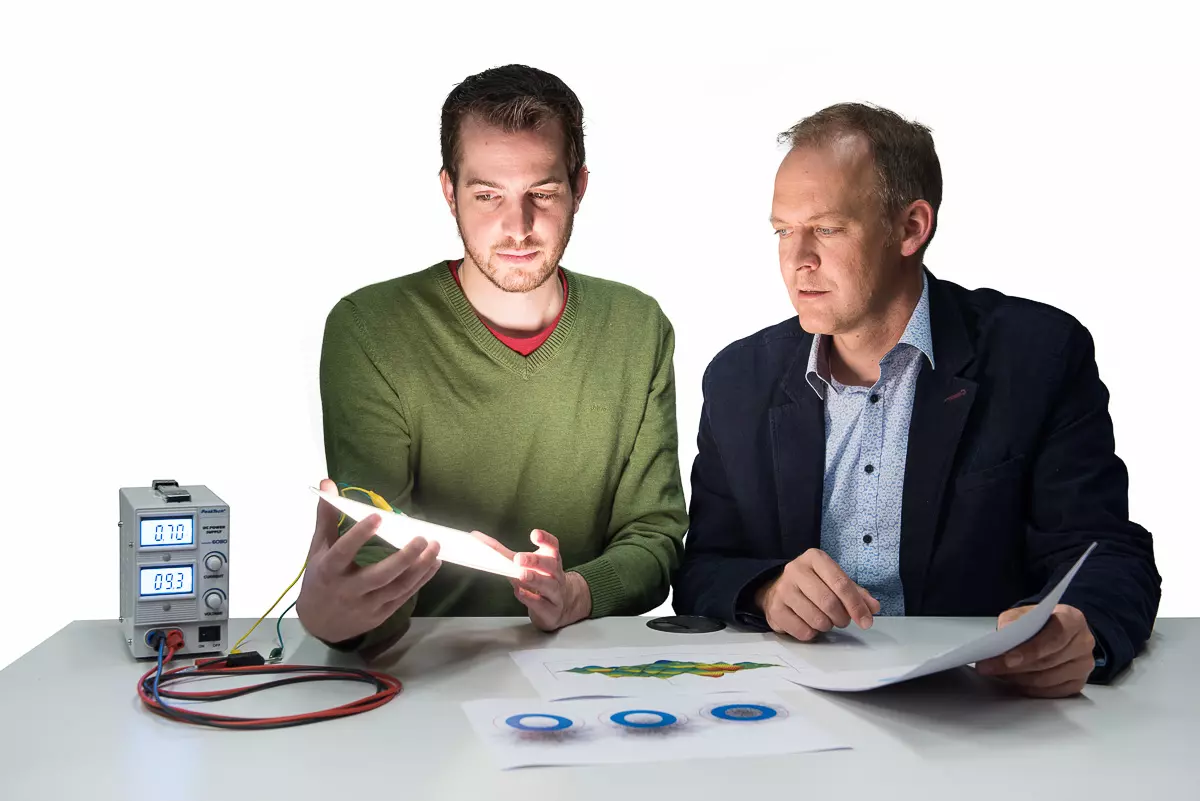Brighter LEDs Thanks to Software Development
Organic light-emitting diodes (OLED) have a promising future as lighting technology. Development work is needed to further increase the light yield. Therefore, the aim of this master thesis was to implement simulation algorithms for the optimization of the light extraction, so that in the future organic light-emitting diodes can be built that are significantly brighter.

Soon foil-based lamps thanks to OLED?
While OLED technology is already widely used in screens, televisions and mobile phone displays, organic light-emitting diodes for lighting applications are only just beginning to reach market maturity. But the physical and electronic properties of OLEDs (Organic Light Emitting Diodes) are fascinating. Due to their material properties, it would be conceivable, for example, that this technology could be used to manufacture flexible, foil-based lamps and screens. However, before these and other possible applications can be further explored, fundamental work must be done. Two particularly major challenges in connection with the development of OLED technology are: more efficient light output and increasing the service life of these diodes.
Total internal reflection as a physical challenge
OLED light sources are manufactured by applying organic semiconducting materials layer by layer on a carrier. Since these layers lie completely flat on top of each other, an optical phenomenon is created that causes the luminosity of OLEDs to collapse sharply: The so-called total reflection, which results in a reduced light extraction. This is because generated light that hits interfaces at a very flat angle inside the light element is reflected. The interfaces between the transparent carrier material and air or the applied OLED then act like a mirror. This light remains trapped in the OLED instead of escaping into the environment as desired. This problem can be circumvented by installing one or more layers inside the OLED that are roughened. However, the question arises as to which surface structure will produce the best results.
Software development for more light
The question of how to increase the light output of OLEDs is being addressed using computer-aided physical models. This involves modeling the scattering behavior of light. In this way, an optimized surface structure is to be developed. Within the framework of a master thesis at the Institute of Computational Physics a new approach has been developed: The measured topography of a roughened surface serves as the basis for this calculation. Therefore, the focus of the development work carried out was the writing of new software modules for the already existing program "Setfos". These new modules make it possible to integrate topography data into the simulation. As initial tests and experimental validations have shown, the simulation method is reliable and does not require a lot of computing power.
About the author of the paper
With his Master's thesis "Calculation of Light Scattering Distribution Functions based on Fourier and Statistical Methods for 3D Textures", Kevin Lapagna earned his Master of Science in Engineering (MSE) degree. He was supervised at the Institute of Computational Physics in the field of organic electronics and photovoltaics.
Supervisor: Beat Ruhstaller